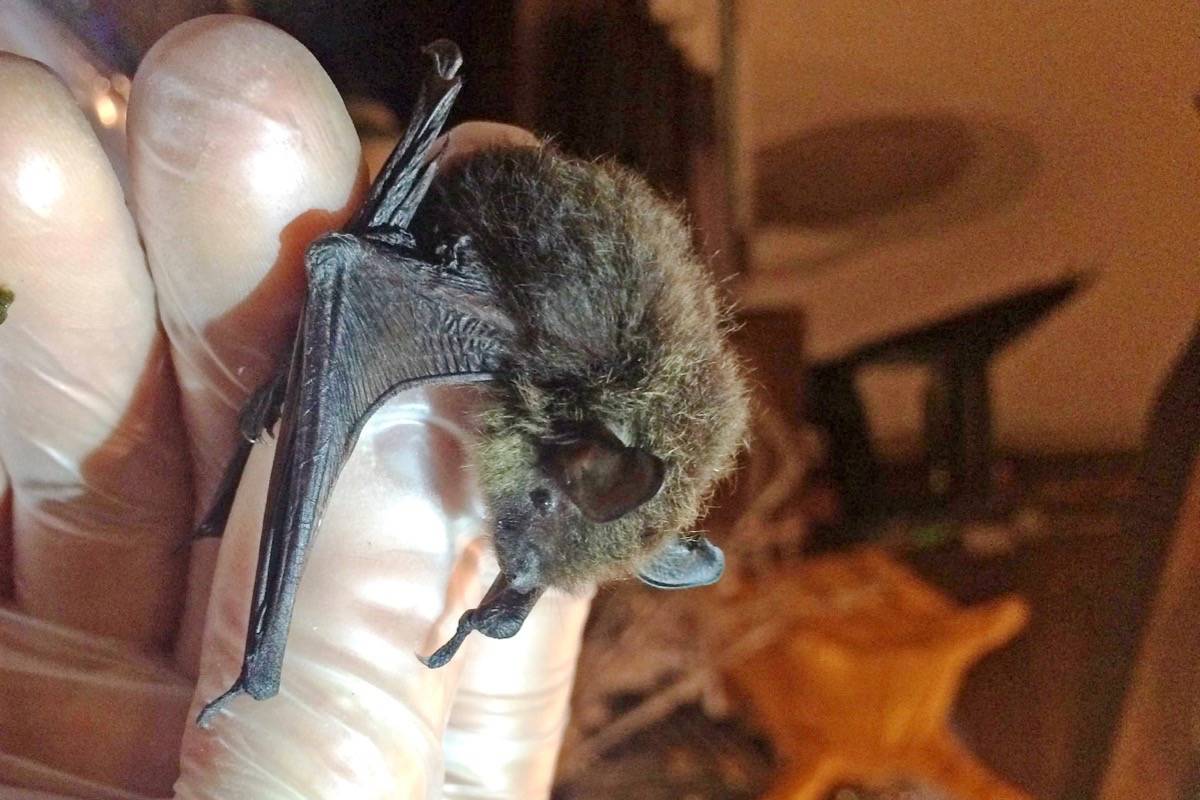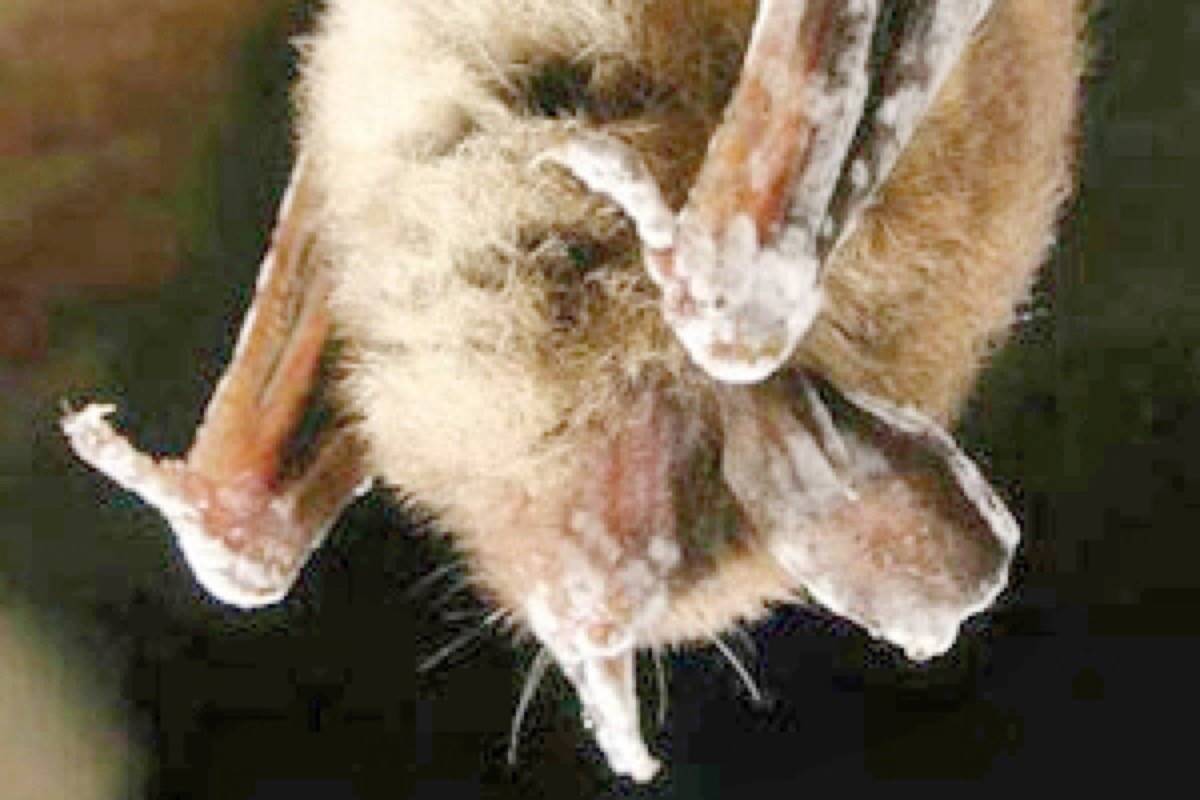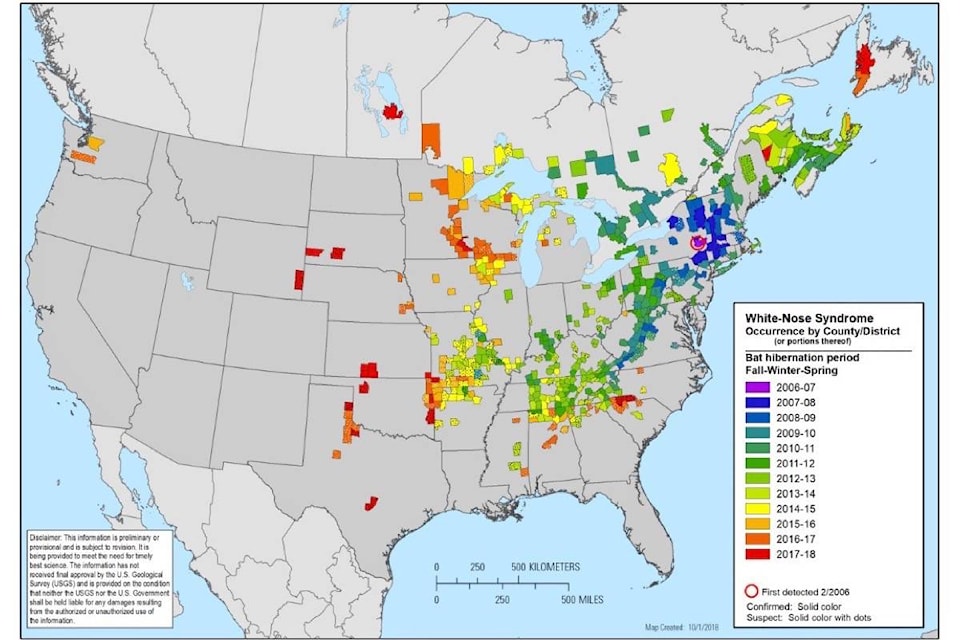Researchers concerned with the impact of White-nose syndrome on bats south of the border are once again asking Semiahmoo Peninsula residents to help them monitor spread of the disease on the west coast.
READ MORE:
The disease ļ¶–Ŗ≤›—–ĺŅňýď confirmed in Washington State, just 150km south of the B.C.-U.S. border ļ¶–Ŗ≤›—–ĺŅňýď has close to 100 per cent mortality for some species of bats, a news release issued Thursday states.
Presence of the fungus ļ¶–Ŗ≤›—–ĺŅňýúis very worrisome for the health of bat populations in British Columbia.ļ¶–Ŗ≤›—–ĺŅňýĚ
ļ¶–Ŗ≤›—–ĺŅňýúThis could be a critical year for bats in B.C. as White-nose syndrome is present across the border,ļ¶–Ŗ≤›—–ĺŅňýĚ regional bat co-ordinator Danielle Dagenais states in a Feb. 28 email to Peace Arch News.
ļ¶–Ŗ≤›—–ĺŅňýúWhite Rock is just over the border and couldļ¶–Ŗ≤›—–ĺŅňý¶ see bats flying north from Washington. WNS could drastically affect bat populations in the White Rock area.ļ¶–Ŗ≤›—–ĺŅňýĚ
Dagenais said it is ļ¶–Ŗ≤›—–ĺŅňýúvery importantļ¶–Ŗ≤›—–ĺŅňýĚ that people not disregard the sight of a dead bat from now until May 31, ļ¶–Ŗ≤›—–ĺŅňýúas their collection is crucial for tracking and monitoring the fungus and bat populations.ļ¶–Ŗ≤›—–ĺŅňýĚ
The typical first sign of the disease is bats flying during the winter ļ¶–Ŗ≤›—–ĺŅňýď a time they are usually hibernating.
Another sign is the appearance of dead bats outdoors as they succumb to the effects of White-nose syndrome.
Residents who spot a dead bat or see bats flying in the area are asked to report the sightings as soon as possible to the B.C. Community Bat Program (CBP) at 1-855-922-2287 or vancouver@bcbats.ca
For dead bats, researchers ask that residents pick them up with gloves, wrap the carcass in paper towel, place it in a Ziploc bag and freeze it to preserve it until it can be shipped for testing.
The release notes that while White-nose syndrome poses no threat to humans, anyone who has direct contact with a bat, or whose pet comes into contact with one, should seek more information about the risk of rabies.
Detecting WNS in B.C. ļ¶–Ŗ≤›—–ĺŅňýúwill require many eyes on the ground,ļ¶–Ŗ≤›—–ĺŅňýĚ CBP official Mandy Kellner states in the release.
The B.C. Community Bat program is funded by the Habitat Conservation Trust Foundation, the Forest Enhancement Society of BC, the provincial government and the Habitat Stewardship Program.
For more information, visit , email vancouver@bcbats.c or call 1-855-922-2287, ext. 11.
tholmes@peacearchnews.com
Like us on and follow us on





